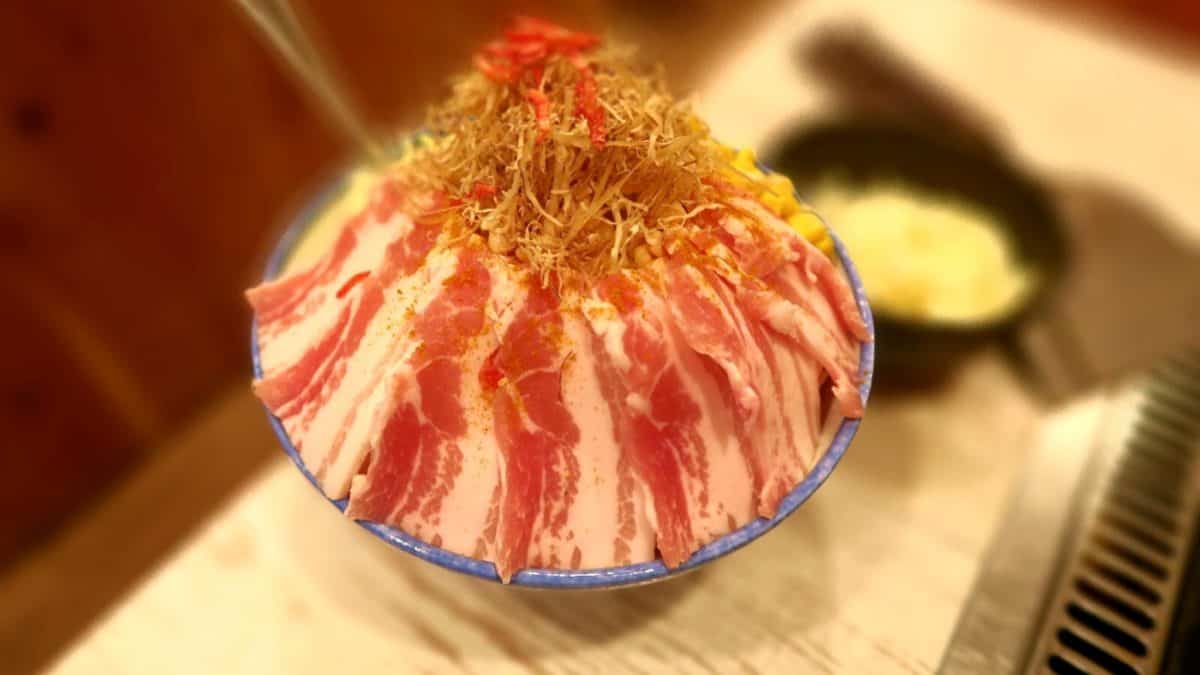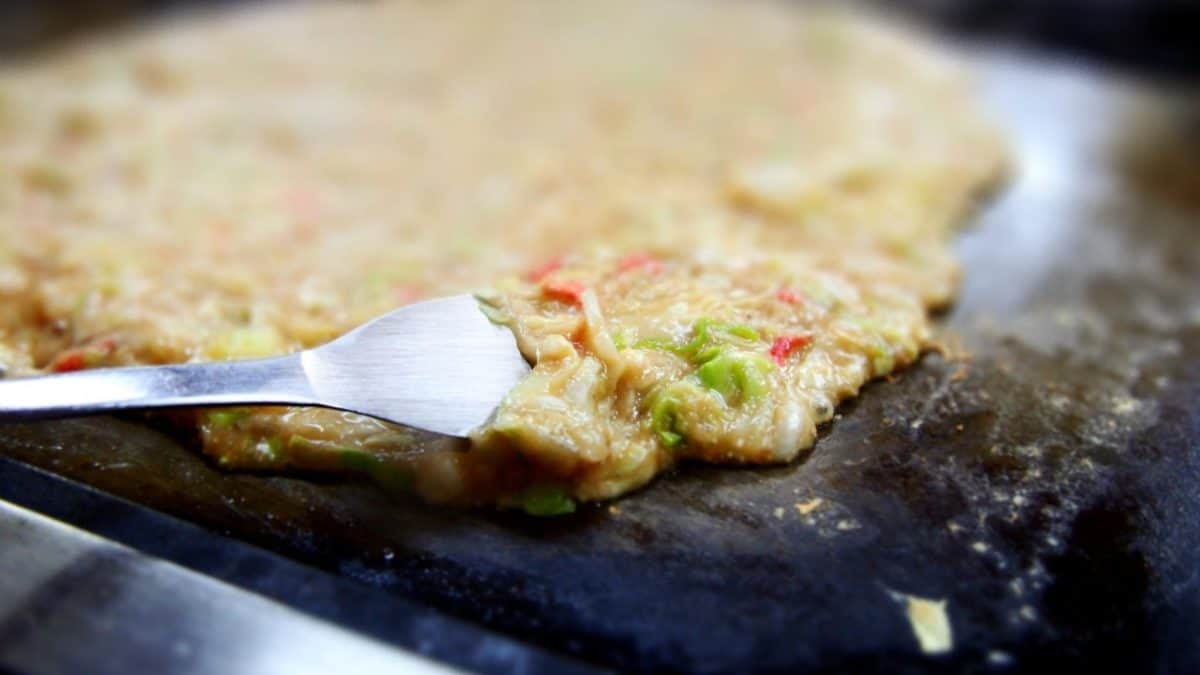Monjayaki or “Monja”: The Runny Pancakes From Tokyo
Monjayaki (often called simply “monja”) is a type of Japanese pancake pan-fried batter with various ingredients that originates from the Kanto region.
It is made using a batter of flour, water, and egg, then fried in a special pan called a misoni.
The finished product is typically thin and crispy, and can be served with various toppings. Monjayaki is often eaten as a street food or at speciality restaurants called monjayaki-ya.


Check out our new cookbook
Bitemybun's family recipes with complete meal planner and recipe guide.
Try it out for free with Kindle Unlimited:
Read for freeIn this post we'll cover:
What does monjayaki taste like?
Monjayaki usually has a savory flavor, typically topped with ingredients like vegetables, cheese, or meat. However, there are also sweet versions of monjayaki that use fruits or chocolate as toppings.
The ingredients are finely chopped and mixed into the batter before frying, and it has a consistency comparable to a pool of melted cheese when cooked.
How do you eat monjayaki?
Monjayaki is typically eaten with a spoon from a bowl. Once it is cooked, the pancake will still be runny and easy to scoop up with the toppings.
I’ve also seen restaurants serve the monja on the teppan griddle where they give you a small spatula to eat it directly from the hot plate.
That’s more okonomiyaki style, although the spatula is much smaller.
If you’re eating it directly from the teppan, you need to scrape a bit off with the spatula, then press down on the batter and ingredients so they’ll stick to it.

Because the batter’s so runny, it’ll stick on there so you can bring it to your mouth and eat it. But be prepared to have some pieces fall off the first time you do this.
What do you eat monjayaki with?
You eat monjayaki on its own. Because of the batter and the extra toppings and ingredients, you can get quite full from a portion.
What’s the origin of monjayaki?
The exact origins of monjayaki are unknown, but it is thought to have first appeared in the early 20th century in the Kanto region of Japan.
The dish gained popularity in Tokyo during the 1950s and has since become a staple of Japanese street food culture.
What’s the difference between monjayaki and okonomiyaki?
While both dishes are types of Japanese pancakes, there are a few key differences.
Monjayaki batter is typically thinner and more watery than okonomiyaki batter, which results in a pancake that is more crispy and less dense.
Monjayaki is also usually cooked in a pan because it’s so runny, while okonomiyaki is often cooked on the flat teppan grill.
What does “monjayaki” mean?
The word “monjayaki” is a combination of the Japanese words for flour (mochiko) and pancake (yaki). It can also be written as 麺餅焼き or もんじゃ焼き.
Popular monjayaki seasoning and sauces
Some popular monjayaki seasonings and sauces include:
- Kewpie mayonnaise
- Bull-Dog sauce
- Worcestershire sauce
- Soy sauce
- Bonito flakes
Where to eat monjayaki?
Monjayaki is typically eaten at speciality restaurants called monjayaki-ya, or from street food vendors.
If you’re in Tokyo, some popular places to eat monjayaki include:
- Kiji (けんじ): a chain of over 30 monjayaki restaurants with locations across Tokyo.
- Tsukishima Monjayaki Street (月島麺や焼きスクランブル): a street with over 20 monjayaki restaurants, located in the Tsukishima district of Tokyo.
- Monja Ton-Chan (もんじゃとんちゃん): a chain of over 10 monjayaki restaurants with locations across Tokyo.
Health benefits
Monjayaki is a good source of protein and carbohydrates, which makes it a filling dish. It is also low in fat and calories, making it a relatively healthy option.
In addition, monjayaki contains a variety of vitamins and minerals, including iron, calcium, and vitamin C.
Conclusion
I hope you’ve enjoyed reading about this delicious, but strange and runny dish. But, you don’t know until you’ve tried it!
Check out our new cookbook
Bitemybun's family recipes with complete meal planner and recipe guide.
Try it out for free with Kindle Unlimited:
Read for freeJoost Nusselder, the founder of Bite My Bun is a content marketer, dad and loves trying out new food with Japanese food at the heart of his passion, and together with his team he's been creating in-depth blog articles since 2016 to help loyal readers with recipes and cooking tips.
